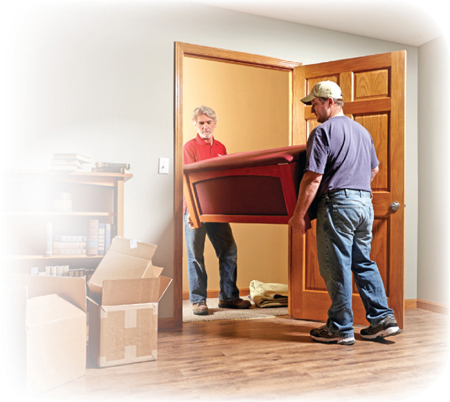
Whether you’re relocating or just rearranging, moving furniture is a big job. But heavy lifting doesn’t have to be back-breaking, especially if you use your brain instead of your back. Here are simple techniques for moving heavy, awkward items without wrecking your body or anything else.

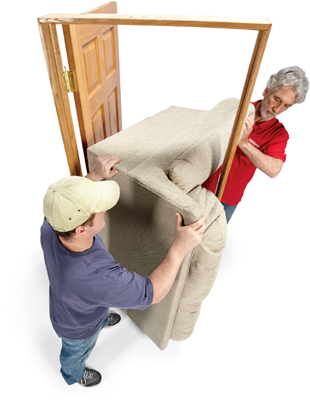
If you ever have to maneuver a couch down a hallway and through a door, you may find it almost impossible to carry it horizontally and make the turn into the room. Before you enter the hallway, place the couch on its end and slide it to the doorway. You’ll almost always be able to hook it through the door. If it’s a bit taller than the door opening, start the top away from the door and gain several inches of clearance.
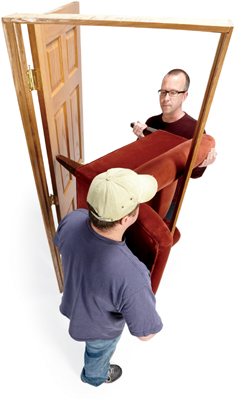
Follow the example of pro movers and “hook” large chairs around corners. Turn the chair on its side so it looks like an “L” and move it back-first through the doorway. Then curl it (hook it) around the door frame and slip it through.
If you’re moving to a new house, decide beforehand which furniture will go where. Before you move, sketch a floor plan with the correct measurements of each room, measure your furniture and create your layout. Then, as you move things in, you (or your helpers, if you’re not there) can place your furniture in the correct spot and not have to touch it again. To make it easy on the movers, tape a copy of the plan to the wall of each room so people can tell at a glance where things go.
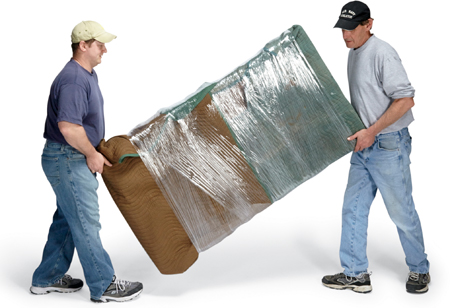
A tall dresser, filing cabinet or shelving unit is awkward to handle. Make it a two-person job. Tip the item backward at an angle and have one person carry the top while the other carries the bottom. This centers the weight and keeps the item from swinging out of control. Transporting the item up or down stairs is easier too, since the carrying angle will roughly match the slope of the stairs.
Voice of experience
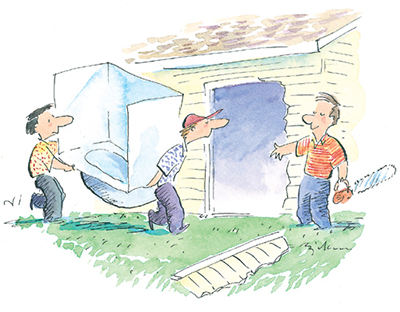
Before you buy anything big, measure the item and the pathway into your home. Don’t forget about small things that might block the path: You may have to remove doorknobs or wall-mounted light fixtures, for example. And don’t forget about turning corners. We measured doorways and determined that our new shower enclosure would fit through. But we didn’t think about turning it around corners, so we had to cut a hole in the wall. That method worked, but I don’t recommend it.
Carolyn Burdge, The Family Handyman Field Editor
You can rent moving blankets or, for a few bucks more, buy them at home centers or moving outfitters, and always have them on hand. To prevent damage to furniture, walls and trim, wrap the item completely with moving blankets and secure the blanket with stretch film. Find 20-in.-wide rolls of stretch film at home centers and moving outfitters.
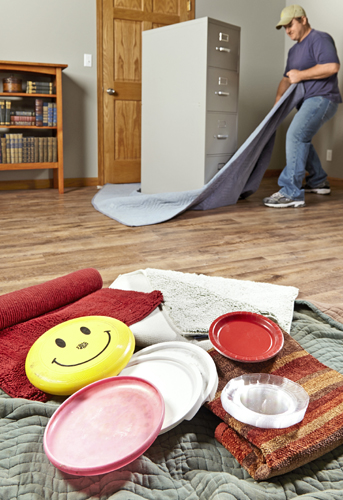
You can buy furniture slides in many shapes and sizes at home centers and online. It’s also easy to make your own sliders from plastic container covers, Frisbees, bedspreads, moving blankets, towels and carpet remnants. Use hard plastic sliders for carpeting, and soft, padded sliders for hard flooring.
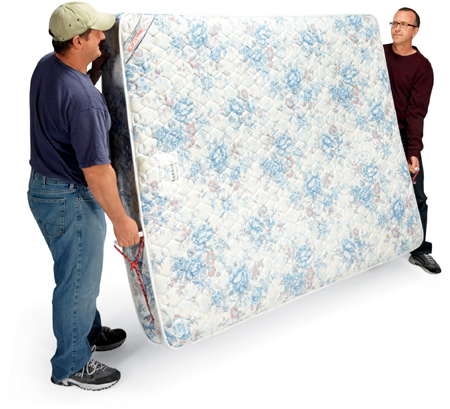
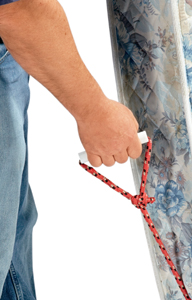
Handling a heavy, floppy mattress is tough. Make it easier with a simple homemade sling. Just slip a 5-in. piece of 1-in. PVC pipe over the rope ends and then loop and tie each end to create a comfortable sling grip. Thread the rope through the mattress handles and you’re on your way.
Is your box spring too big to fit around a tight corner? You could buy a two-piece “split” box spring (and pay several hundred bucks) or cut your existing box spring and fold it so it fits. Sound extreme? There’s actually a simple, ingenious way to cut and fold your box spring without wrecking it.
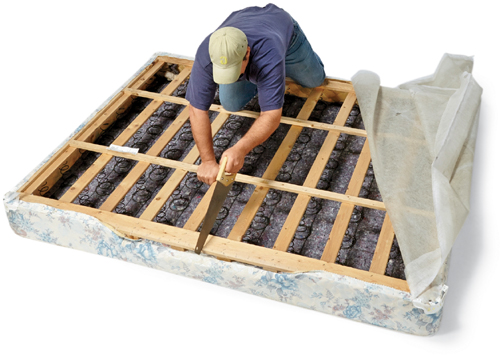
1. Cut the frame
Remove the fabric covering (the most tedious part of this whole process is removing the staples) and place the box spring face down. Pull back the mattress cover along each side and cut through the frame just to the left or right of the middle crosspiece (don’t cut through the crosspiece itself). Do this on both sides and in the center.
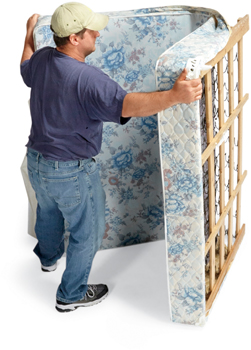
2. Fold it
You can now fold the box spring like a book and move it. Secure it with a strap to prevent it from springing open.
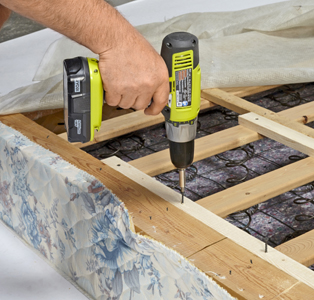
3. Put it back together
Screw a 1x2 along the center crosspiece cuts and against the inside of the outer frame to reinforce them. Then staple the fabric covering in place.

Moving and lifting straps (aka “hump straps”) take the weight off your back by relying on leverage and large muscle groups. They also leave your hands free to maneuver awkward items. However, they can be tricky to use on stairs because the weight shifts completely to the downhill mover. Look for lifting straps that can be adjusted for different-length objects as well as for different-size movers. The lifting straps shown here are great for moving on flat surfaces. Over-the-shoulder lifting straps give you better control on stairs.